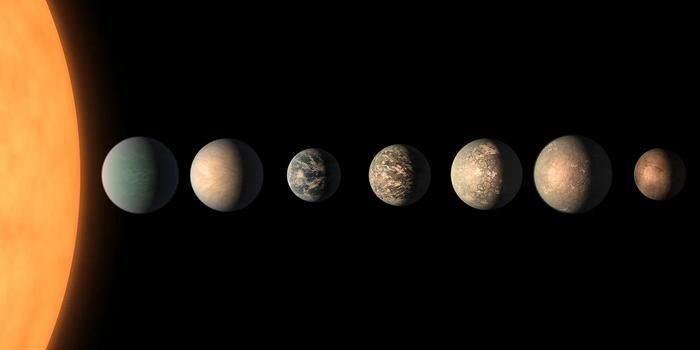Barnard's Star May Host an Exoplanet After All...
At six light-years away from Earth, Barnard’s Star holds the title of the second-closest stellar neighbor to our solar system. Astronomers have long studied this red dwarf to learn more about it, but it wasn’t until recently that something eccentric captivated their attention.
Image Credit: IEEC/Science-Wave - Guillem Ramisa
A paper published just this week in the journal Nature by an international team of researchers denotes how recent observations of Bernard’s Star turned up some rather peculiar wobbling motions. Astronomers have long thought that stellar wobbling transpires when an orbiting body, such as an exoplanet, gravitationally tugs on the host star. That said, could this explain what was happening here?
Given the open-ended circumstances, the researchers dug a bit deeper. They turned to more than two decades’ worth of archived astronomical data and compared it with recent observations made with the CARMENES spectrometer in Spain, the ESO/HARPS instrument in Chile, and the HARPS-N instrument in the Canary Islands.
As it turns out, the additional legwork was well worth the effort. The astronomers discerned a bevy of clues that were consistent with the notion that a terrestrial exoplanet some 3.2 times more massive than Earth orbits Bernard’s Star. Perhaps unsurprisingly, the astronomers have named their so-called exoplanet ‘Bernard’s Star b.’
"After a very careful analysis, we are over 99 percent confident that the planet is there since this is the model that best fits our observations," explained Dr. Ignasi Ribas, the lead author of the paper. "However, we must remain cautious and collect more data to nail the case in the future."
Related: Proxima b may not be a habitable world after all
Admittedly, the discovery of this exoplanet is still very much theoretical. None of the astronomers physically laid eyes Bernard’s Star b, but all the circumstantial evidence thus far implies that it exists.
Assuming Bernard’s Star b does exist, then the astronomers are relatively sure that it resides far outside of Bernard’s Star’s habitable zone and orbits the host star once every 233 days. Consequently, the exoplanet’s surface temperature is rather chilly at -170 Celsius, and it’s unlikely that a world this cold would be habitable.
As you can probably imagine, additional observations are already underway to validate the team’s findings. Even if they don’t find anything worthwhile, perhaps NASA’s James Webb Space Telescope will. Either way, it should be interesting to see how this pans out.
Source: EurekAlert, Nature









